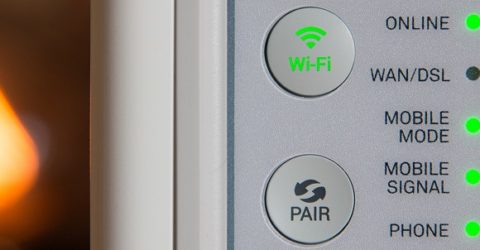Coming soon to a router near you: the evolution of 6GHz WiFi
The emergence of 6GHz WiFi could significantly improve home broadband connections, though it’s important to understand why that’s necessary

In the beginning, there was 2.4GHz WiFi. And it was… frustrating.
The decision to use a frequency already crowded with signals from other wireless equipment like baby monitors and car alarms wasn’t an inspired one.
Indeed, having been around since the mid-1980s, the 2.4GHz frequency spectrum is extremely congested, with a spectrum of devices all attempting to use it simultaneously.
In response, dual-band wireless broadband routers began to emerge a decade ago, offering a choice between 2.4GHz and the faster (if less far-reaching) 5GHz band.
This improved the WiFi experience for many, but still delivered inferior data transfer speeds to those achievable via Ethernet cabling.
Today, work is underway on a third band. Last summer, Ofcom released 500MHz of radio spectrum frequency, to meet the latest 802.11ax WiFi standard.
In doing so, they have increased the potential speed of data throughput across home WiFi networks to 10Gbps – ten times the fastest internet connections currently being piped into UK homes.
And while this is a theoretical speed, it could ensure WiFi ceases to be the poor relation of hardwired connections in future.
Six appeal
As wireless frequencies increase, so does the speed at which data can be transferred, though range is reduced.
A 5GHz connection will be optimised for intensive activities like FPS gaming, but it’s less likely to reach far-flung bedrooms than the slower 2.4GHz connection.
Adding 6GHz WiFi into the mix would reduce congestion on these older frequencies. It could slash latency by as much as 75 per cent, while improving a router’s power efficiency.
MoreTri-Band routers will banish patchy wifi
As such, it was an easy decision for Ofcom to free up the 5925-6425MHz bands for future WiFi devices.
However, this is still an emerging technology, and the 802.11ax standard it will support has yet to be published at the time of writing.
In time, it will replace the existing 802.11ac standard, with signature improvements including routers differentiating their own transmissions from those in neighbouring networks.
As of November 2021, a variety of smartphones and the latest Apple MacBook computers have been designed to meet the proposed 802.11ax standard, as has Sony’s PlayStation 5.
However, you’ll struggle to find a domestic router capable of delivering 6GHz WiFi – which will be marketed as WiFi 6E.
When you do, you should notice far fewer 6GHz routers within range of your device, slashing the amount of network congestion.
It’ll also minimise the annoying phenomenon of devices dropping out or being unable to connect because there are too many competing signals in (or around) your property.
Could this affect 5G?
Some people have suggested the introduction of ultrafast home broadband could reduce the need for (or appeal of) 5G mobile data.
However, these are complimentary rather than competing technologies.
MoreThree claims 5G could replace home broadband
By definition, 6GHz WiFi only works across short distances, making it ideal for domestic use.
Conversely, the always-on nature of future 5G networks should ensure tomorrow’s handsets are always connected outdoors.






